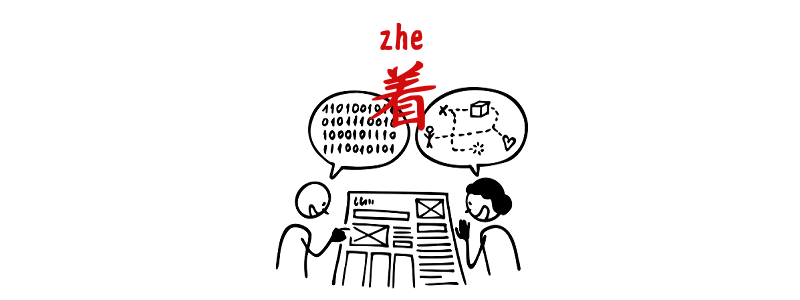What are Existential Sentences:
Existential sentences are used to talk about the existence or presence of someone or something in a particular place. They answer questions like:
- What is there?
- Who is at a place?
- What is on/in something?
What are Posture Verbs:
Posture verbs describe a person or object’s physical position or pose.
- 坐 zuò – to sit
- 站 zhàn – to stand
- 躺 tǎng – to lie down
- 蹲 dūn – to squat
Actually a lot of Non-Posture verbs can also apply for this structure.
- 挂 guà – to hang
- 放 fàng – to put
- 住 zhù – to live
- 走 zǒu – to walk
- 来 lái – to come
- 写 xiě – to write
- 贴 tie – to stick
Structure
Location + Posture Verb + 着 zhe + Subject/Object
It indicates a continuous state. Used to show that someone or something is in a certain posture or position and remains that way at the moment being referred to.
門口站著一位警察门口站着一位警察
There’s a police officer standing at the door.
地上躺著一隻狗地上躺着一只狗
There’s a dog lying on the ground.
白板上寫著今天的作業白板上写着今天的作业
Today’s homework is written on the whiteboard.
桌子上放著一本書桌子上放着一本书
There’s a book placed on the table.
牆上掛著一幅畫墙上挂着一幅画
There’s a painting hanging on the wall.
Location + Posture Verb + 了 le + Subject/Object
It indicates a completed action or change. When used in existential sentences with posture verbs, 了 suggests that the action of assuming the posture has already occurred and may or may not be continuing.
門口站了一位警察门口站了一位警察
A police officer came and stood at the door.
地上躺了一隻狗地上躺了一只狗
A dog lay down on the ground.
白板上寫了一句話白板上写了一句话
A sentence was written on the whiteboard.
牆上掛了一幅新畫墙上挂了一幅新画
A new painting has been hung on the wall.
桌子上放了一杯水桌子上放了一杯水
A glass of water was placed on the table.


